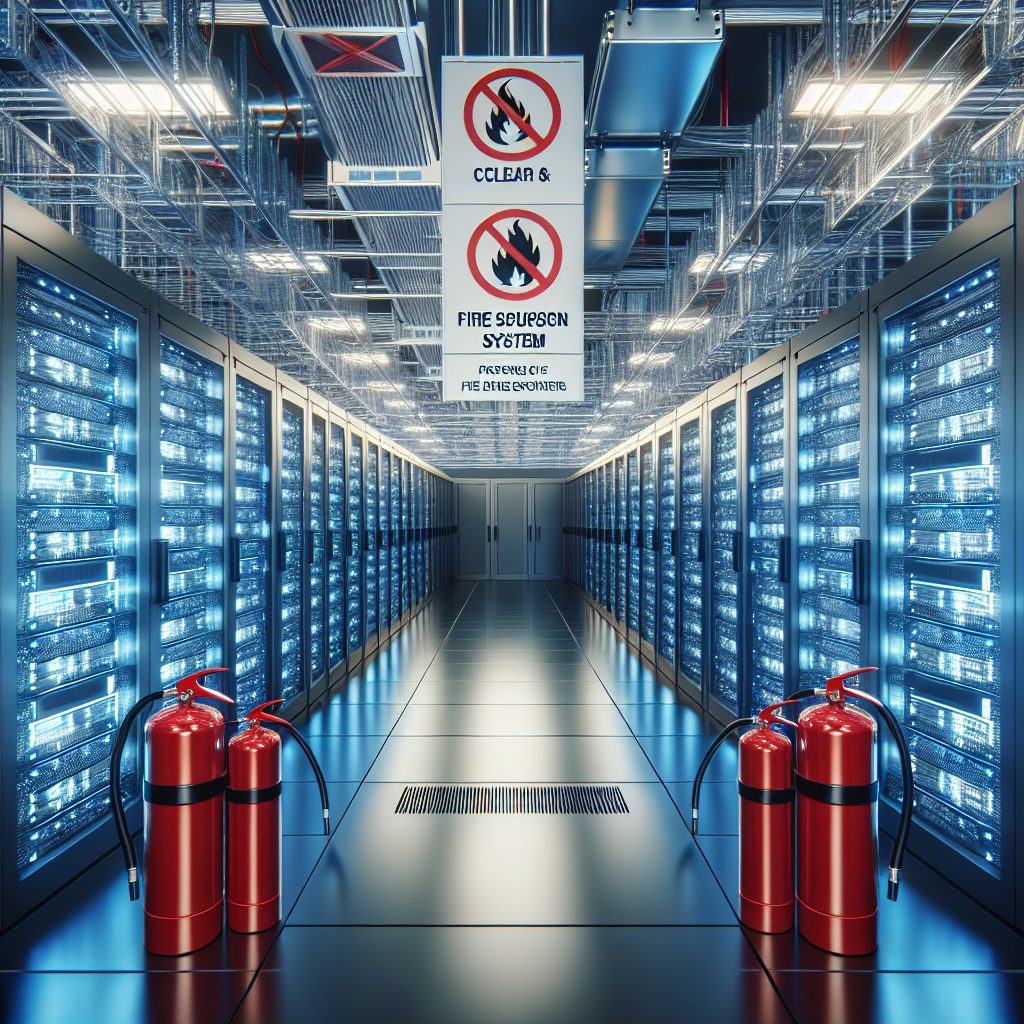Your cart is currently empty!
Key Considerations for Implementing a Fire Suppression Plan in Your Data Center

Data centers are the backbone of many businesses, housing critical information and infrastructure that keep operations running smoothly. With the amount of valuable data stored in these facilities, it is essential to have a comprehensive fire suppression plan in place to protect against the devastating effects of a fire. Implementing a fire suppression plan in your data center requires careful consideration and planning to ensure the safety of equipment, personnel, and data.
Here are some key considerations to keep in mind when developing and implementing a fire suppression plan in your data center:
1. Understand the risks: Before implementing a fire suppression plan, it is important to assess the potential risks and vulnerabilities in your data center. Consider factors such as the types of equipment and materials stored in the facility, the layout of the space, and any existing fire suppression systems in place. This will help you identify the most effective fire suppression methods for your specific needs.
2. Choose the right fire suppression system: There are several types of fire suppression systems available, each with its own pros and cons. Common options include water-based systems, gaseous systems, and chemical systems. It is important to choose a system that is suitable for the size and layout of your data center, as well as the specific risks present in the facility.
3. Consider environmental impact: When selecting a fire suppression system, it is important to consider the environmental impact of the chemicals used. Some fire suppression systems, such as halon, have been banned due to their harmful effects on the ozone layer. Look for environmentally friendly alternatives that are safe for both people and the environment.
4. Plan for downtime: Implementing a fire suppression plan may require temporarily shutting down equipment or even the entire data center. It is important to plan for potential downtime and have contingency measures in place to minimize the impact on operations. Consider implementing redundant systems or backup solutions to ensure continuity of service in the event of a fire.
5. Train personnel: Even the most advanced fire suppression system is only effective if personnel are trained to use it properly. Make sure that all employees are familiar with the fire suppression plan, know how to operate the system, and understand evacuation procedures. Regular training and drills can help ensure that everyone is prepared in the event of a fire.
6. Regular maintenance: Once a fire suppression plan is in place, it is important to schedule regular maintenance and testing to ensure that the system is functioning properly. Inspect equipment, check for leaks or malfunctions, and replace any outdated components as needed. Regular maintenance can help prevent system failures and ensure the effectiveness of the fire suppression plan.
Implementing a fire suppression plan in your data center is a crucial step in protecting your valuable assets and ensuring the safety of personnel. By carefully considering the risks, choosing the right system, and planning for downtime, you can help safeguard your data center against the devastating effects of a fire. With proper training and maintenance, you can have peace of mind knowing that your data center is prepared for any emergency situation.

Leave a Reply